MXA INTERVIEW GERRIT WOLSINK: THE DUTCH DENTIST
By Jim Kimball
GERRIT, WHEN YOU WERE GROWING UP, YOUR FATHER HAD A MOTORCYCLE AND CAR BUSINESS. IS THAT HOW YOU GOT INVOLVED IN MOTORCYCLES? We lived in a little village, and my father had a store that sold bicycles, mopeds, motorcycles and cars. Also, my uncle Bennie Hartelman raced all the early 500 GPs with the Swedes like Sten Lundin and Bill Nillson. He lived at our house, so I went with him to a lot of races. Because my dad was selling mopeds, when you are a young kid, what you do is get an old moped and do motocross with it.
“I GREW UP IN A TIME WHEN PEOPLE HAD TO BUILD THEIR OWN BIKES. THAT IS MY BACKGROUND AND THE BASIS OF MY INTEREST IN MOTOCROSS.”
THERE WAS A LOT OF BACKYARD MOTOCROSS BIKE DEVELOPMENT, RIGHT? Yes, my uncle built his own motorcycles. He made his own frame and initially used BSA Goldstar engines, but then he bought a Husqvarna four-stroke engine from Rolf Tibblin for his motocross bike. I grew up in a time when people had to build their own bikes. That is my background and the basis of my interest in motocross.
DID YOU MOVE UP THROUGH THE MOTOCROSS RANKS RIGHT AWAY? Yes, I bought a 250 Husqvarna and started winning right away. I moved to the Dutch National class and won. Then I stepped up to the international class and kept on winning. I think every champion, even Hannah, Johnson, Ward, Decoster and Mikkola, won every race they competed in.
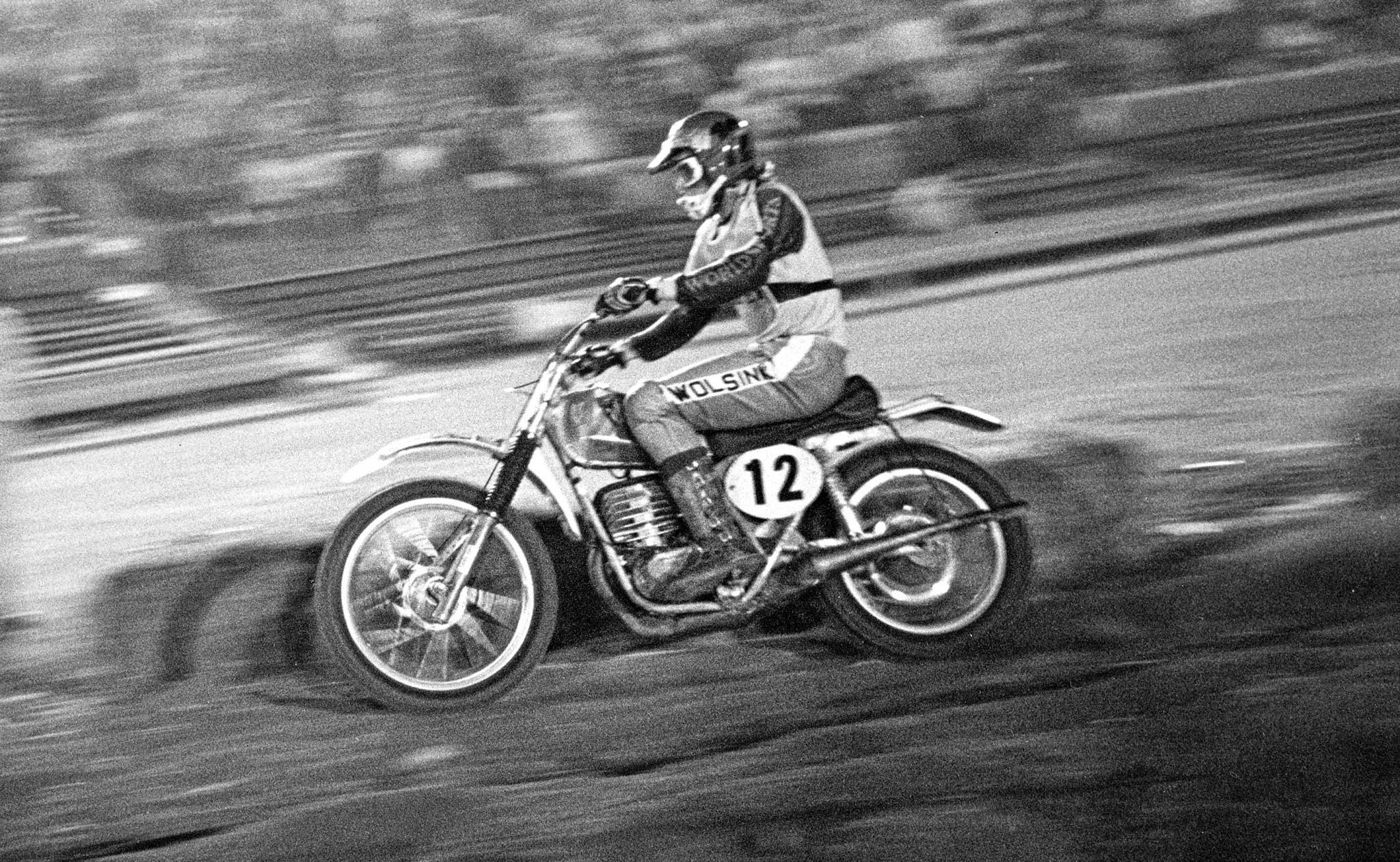
DID YOUR RACING HELP PAY FOR DENTAL SCHOOL? Yes. My mother always said I should go to the university and use my brain. She told me not to work in my father’s motorcycle shop because I would have to work very hard for very little money. I told her, “Okay,” but did it on the side. But one of the engineers from the Husqvarna Factory said, “I will sponsor you if you finish your dental school. You can make more money being a dentist than in motocross.” In those days, not even champions like Bengt Aberg and Torsten Hallman made a lot of money. You raced motocross because you liked doing it and you had a passion for it.
IS IT TRUE THAT IN 1968 YOU GOT SECOND AT THE DUTCH GP BUT A WEEK LATER GOT LAPPED AT THE BELGIAN GP. WHAT HAPPENED? Yes, that was a curious situation. When I got lapped by Roger DeCoster in the first moto at Namur, I thought, “I have to do something different!” Then, in the second heat, I was 14th, and I thought, “I’m really improving.” [Laughs]
WHY THE SIGNIFICANT DIFFERENCE IN RESULTS? In Holland it was sandy all the time, so I got used to that. Namur was different. It was one of the nicest tracks in motocross. I truly enjoyed riding there. It was different, but the moment I got an international license in 1968, I only did a few Dutch Championship races, but on all the other weekends, I was racing in France or Belgium. I had the dream of being fast everywhere. My uncle, who was a Grand Prix racer, told me, “The moment you have a chance, go to France, Switzerland and Belgium, and learn the different circumstances.” The other guys in Holland did not do that, and that is why they failed in the GPs outside Holland.

WHEN DID YOU FULLY SWITCH TO RACING THE WORLD CHAMPIONSHIP SERIES? It was in 1972 while finishing up my last year in dental school. I finished my studies at the end of 1972, and in January 1973 I signed with Maico and went full professional. My focus was on the 500 class.
YOU WON THE FIRST 500 GP OF 1973. DID THAT CREATE EXPECTATIONS OF YOU WINNING THE TITLE? Yes, it was my first time on the Maico, and I won the first GP in France. I knew from the beginning that it takes many years to get to the top. You don’t succeed immediately. Maybe you get one or two wins, but it takes many years to be ready for the World Championship. You must not put too much pressure on yourself.
“WHEN I WENT TO SUZUKI IN 1975, I WAS GOOD, BUT IN 1976 AND 1977, I REALLY FELT THAT I COULD BE A WORLD CHAMPION, MENTALLY AND PHYSICALLY.”
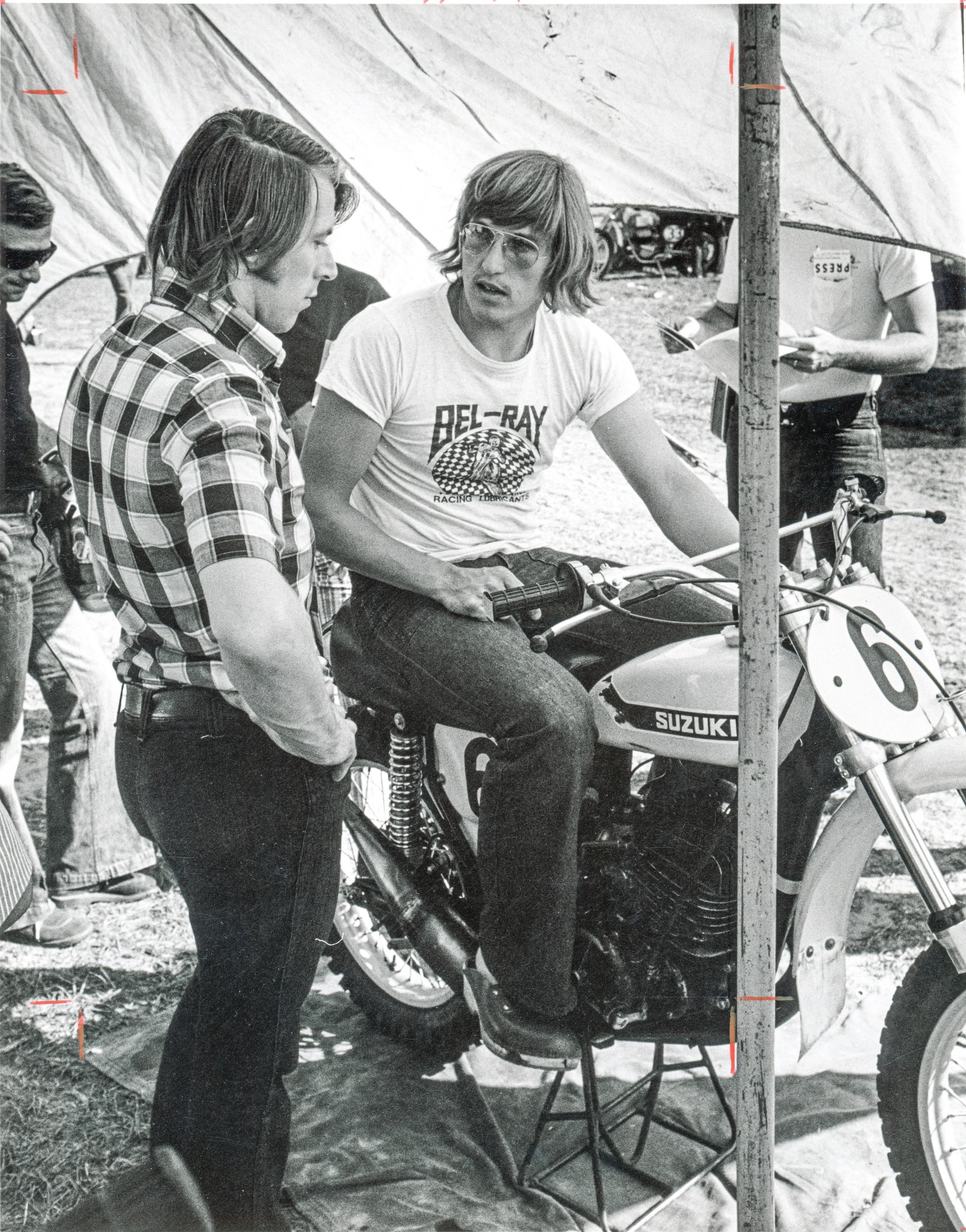
YOU FINISHED FIFTH IN THE 1972 CHAMPIONSHIPS. I was lucky that I was at Maico, because in the middle of the 1972 season we got the moved-up shocks, and after that Willie Bauer and I were so strong in the GPs. That bike was so good. I loved it. That is why I did so well at the Carlsbad USGP. I felt so good when I was in the States and loved that Maico feeling. Maico made a great bike in 1973. I combined the technical advances of Husqvarna and Maico, and I took that knowledge with me to Suzuki. At the same time, Ake Johnsson went from Maico to Yamaha, and he built the “Yamaico.” People laughed at it, but he brought the rideability and frame geometry of the Maico to the Yamaha. Maico does not get enough credit for that.
WHY DID YOU SWITCH FROM MAICO TO SUZUKI? WAS IT MONEY? No. Financially, the contract was the same, but I looked around at the GPs and saw the support of Suzuki and the support of Maico. Even in the States when I did the USGP at Carlsbad on a Maico, I saw the setup that Suzuki had and the Maico setup and said to myself, “Gerrit, if you want to succeed, you have to make a move.”
WHAT MADE YOU THINK THAT SUZUKI MIGHT HIRE YOU? I was lucky that Suzuki only had Roger Decoster in the 500 class. Suzuki of Japan really wanted to win the Manufacturer’s title. What people don’t realize is that the Japanese highly valued the Manufacturer World Championship. I realized that they wanted the Manufacturer World Championship more than they wanted their riders’ individual World Championships.
HOW DID THAT MAKE YOU DESIRABLE TO SUZUKI? Suzuki needed a second rider to earn points, and I approached them. I also talked to Roger at the same time about racing for Suzuki. I think Roger wanted me because I was not competition to him. He felt that I would make a good second rider on the team. I had good results and was very diplomatic in approaching the Suzuki people. In September of 1973, I signed my Suzuki contract.
AT SUZUKI, YOU WERE ALWAYS IN THE TOP THREE IN THE 500 WORLD CHAMPIONSHIPS. When I went to Suzuki in 1975, I was good, but in 1976 and 1977, I really felt that I could be a World Champion, mentally and physically. In 1976, I had a problem with another rider in both motos in the final GP in Luxembourg, and Roger won the 500 Championship by a few points. In 1977, Heikki Mikkola came into the 500 class with a much better bike. We had a lot of problems with Suzuki in 1977. The chains came off many times. Then, in 1978, the whole combination of myself and the bike was not so good. I never got a title.
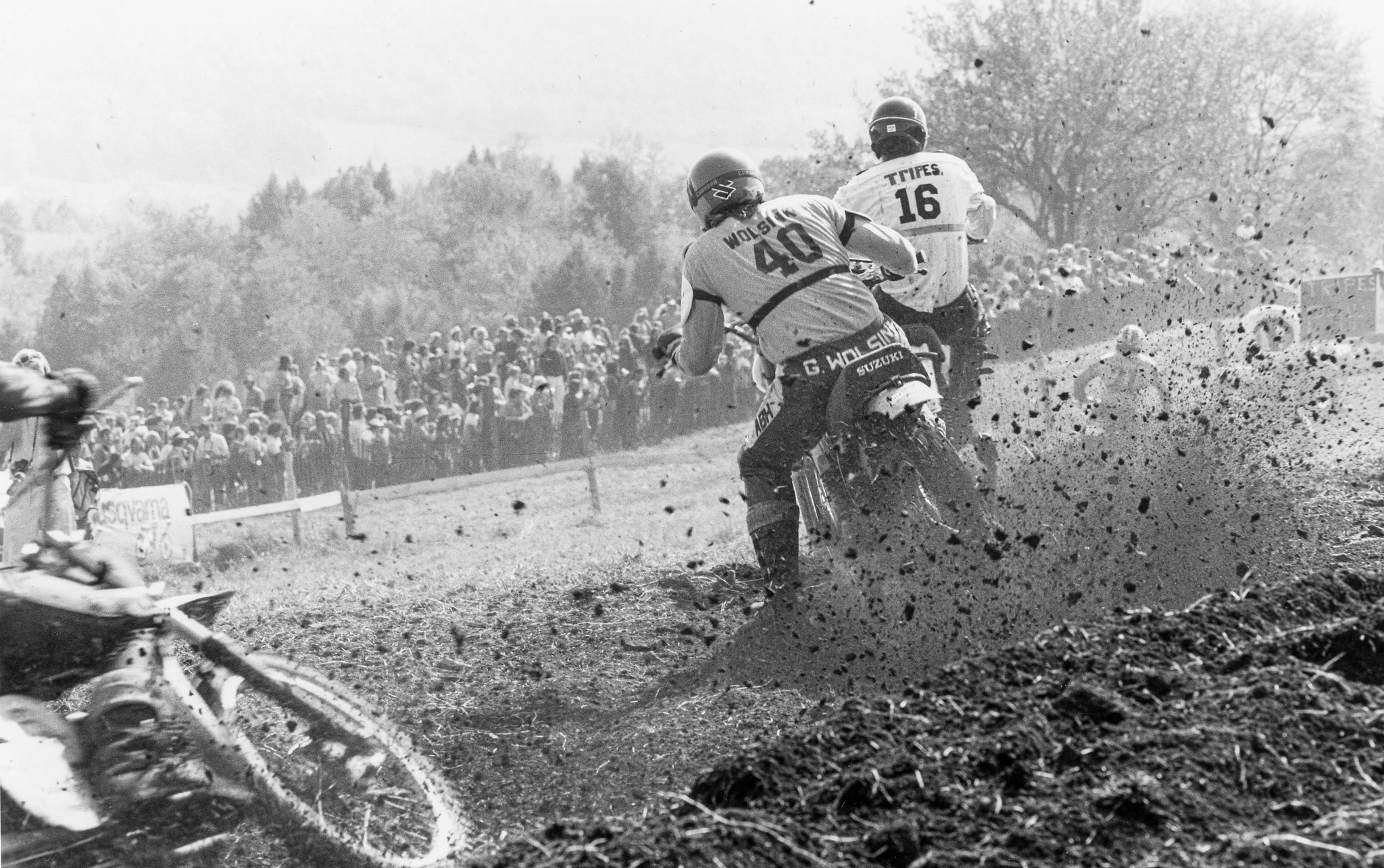
YOU ALMOST WON THE 1976 500 WORLD CHAMPIONSHIP. EXPAND ON THE “PROBLEM WITH ANOTHER RIDER.” I don’t want to talk too much about that, but I was blocked at the last race of the season by a Belgian rider. If that last race of 1976 would have been in Holland, I would have been World Champion easily, but it was in Luxembourg, and it was not a nice track to decide a World Championship on.
YOU DIDN’T SAY THE RIDER’S NAME? WAS IT ROGER DECOSTER? HE COMES TO MY MIND WHEN YOU SAY A BELGIAN. No, it was not DeCoster. We always had fair fights between DeCoster, Mikkola, Aberg and me.
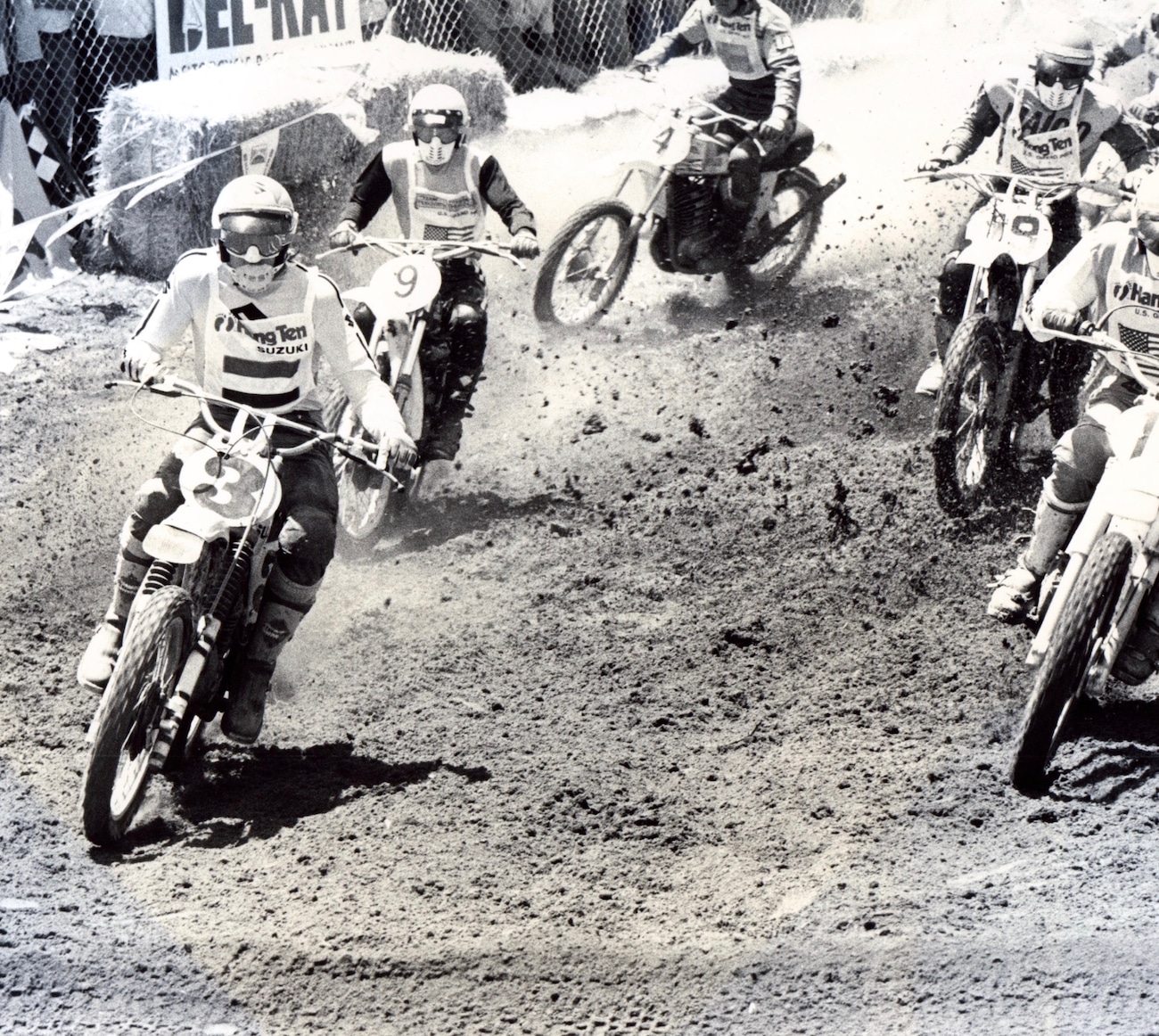
LET’S SWITCH TO YOUR FIVE WINS AT THE CARLSBAD USGP IN 1974, 1975, 1976, 1977 AND 1979. WHY WERE YOU SO GOOD THERE? I like California. I liked to be there and felt good. I can take the heat very well. I liked the layout of the track, which was very winding. It was not a stop-and-go track. You had to pick good lines.
Since Roger’s wife was from California and Roger had lots of friends in L.A., his time was occupied in the week leading up to the USGP. At the airport, Roger went to the right, and I went to the left. I stayed in a hotel, and I could practice when I wanted, train when I wanted and do whatever I wanted. I always set up my bike for the full 45-minute motos. And in those days, because they moved the shocks forward, we had many problems with the shocks fading in the last 15 minutes of the motos. I set my bike up so that in the first 10 minutes of the moto, the shocks barely moved. Then late in the moto, when they started to fade, they were still good enough.

CARLSBAD HAD A CLAY BASE AND WAS VERY HARD-PACKED AND BLUE-GROOVED. IT WAS NOT THE PERFECT TRACK FOR A DUTCH SAND RIDER. I did not use the blue groove so much. I used the outside of the blue groove. I tried to ride completely different lines. Ricky Johnson told me, “I grew up on that track.” I said, “Yeah, and you are a good rider, but you did not look at the lines hard enough. You were used to how you rode it and did not look for other places where you could ride.”
TELL US ABOUT THE YEAR THAT YOU CRASHED INTO THE SIDE OF THE TRACK AT THE CHECKERED FLAG FOR THE WIN. I crashed because I made a mistake. Heikki Mikkola was trying to pass me anywhere he could on the last lap! I missed the Devil’s Drop jump before the finish line and went wide at the left turn, but I kept my throttle pegged and went straight towards the guy with the checkered flag. I did not want to slow down to make the right-hand turn. I went under the flag and into the wall to win. That made me famous, because “ABC Wild World of Sports” telecast it.
IN 1979, YOU FINISHED SECOND IN THE 500 WORLD CHAMPIONSHIP, BUT SUZUKI FIRED YOU AND ROGER FOR 1980. WHAT WAS THAT ABOUT? In 1979 I won Carlsbad and Cope Town in Canada. I was only eight points behind DeCoster and realized that I could truly become the World Champion! But, I could not handle the stress. I was not relaxed anymore. I had problems in my marriage, and when you have marriage problems, you lose your focus. You lead separate lives and, near the end of the season, Suzuki fired Roger and me.
WHY DID SUZUKI FIRE BOTH OF YOU? They said, “You are too old, and we need younger riders.” Roger went to Honda, and I had to return to Maico. That was my only escape route to continue in motocross, but the 1980 Maico was terrible. In a strange twist, the big boss at Honda called and asked, “How come you are riding a Maico. Why didn’t you call me?”
I said, “I did not know how to call you.” He said, “You should have contacted Honda of Netherlands.” Can you imagine that? I was with Maico and could have been on a Honda.
THEN WHAT HAPPENED? As I said, the Maico was terrible, but I did not want to stop racing, so I called Honda of Netherlands. They had a Six Day Project in the works and wanted me to lead it. Then they said, “But you can also do motocross in 1981.” They surprised me with Honda Grand Prix bikes that were only one year old.
WAS ROGER DECOSTER INVOLVED? Roger called me in the beginning of the 1981 season and said, “If I get you a bike, can you win Carlsbad again?”
I said, “If you give me a good bike, I think I can win it, and trust me that I am going to train extra hard.” I nearly won it. I was second to American Chuck Sun in the first moto and crashed in the second moto.
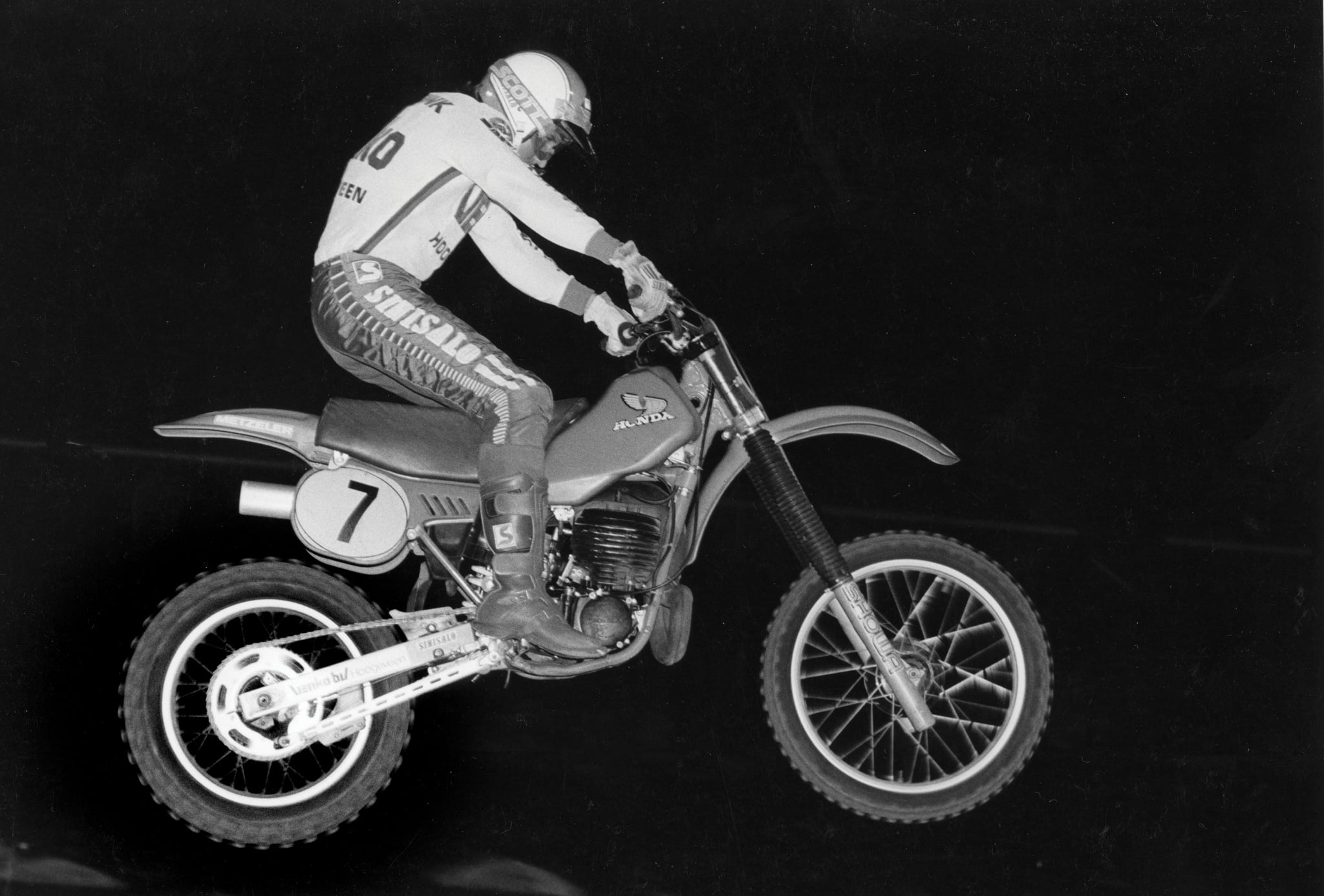
DID YOU FINISH OUT THE REST OF THE GPs IN 1981 ON THE HONDA? Yes, but I was not good enough. The Six Days became more important to me. That year, in 1981, I won the four-stroke class in the Six Days on a Honda. Then Honda built a new bike, and in 1984, Netherlands was the World Championship team.
YOU HAVE BUILT A REPUTATION FOR RESTORING VINTAGE MOTORCYCLES. Yes. I restore old bikes, mainly motocross bikes. I restore those and then bring them to the Mecum auctions in Las Vegas every January.
“ALL THE MXGP TRACKS LOOK THE SAME. I LIKE TO WATCH THE AMA OUTDOOR NATIONALS, BECAUSE THOSE TRACKS ARE FANTASTIC. GIUSEPPE LUONGO KILLED THE GPS WHEN HE MADE IT IMPOSSIBLE FOR A YOUNG RIDER TO COMPETE.”
WHAT DO YOU THINK OF THE CURRENT WORLD MOTOCROSS SERIES? All the MXGP tracks look the same. I like to watch the AMA outdoor Nationals, because those tracks are fantastic. Giuseppe Luongo killed the GPs when he made it impossible for a young rider to compete. The riders must pay so much money to get an entry, they don’t get start money, and they don’t get prize money. Now you see a Grand Prix with only 15 riders on the gate. That is a shame; they are killing motocross.
WHEN WAS THE BEST TIME TO BE A MOTOCROSS RACER? WAS IT BACK WHEN YOU WERE RACING? I raced in the middle of the development era of motocross bikes. I’ve seen the bikes grow from the old BSA era to long-travel suspension to electronic ignitions. I was lucky to ride on the Suzuki team with Roger DeCoster and the Maico team with Adolf Weil. I am a happy person and have been in this sport when the racers were technical from the heart. Riders like Ake Johnsson, Torsten Hallman and Roger Decoster built a lot of their own stuff. I am happy to have been at the top, even if I didn’t win the World Championship.
The Carlsbad USGP did so much for me. When I go to the Mecum auctions in Las Vegas, people recognize me and want to talk to me. It is hard to imagine that in that giant hall with all those cool motorcycles and 10,000 people milling around that someone will tap you on your shoulder and say, “Hey, Gerrit, can I have your autograph?”


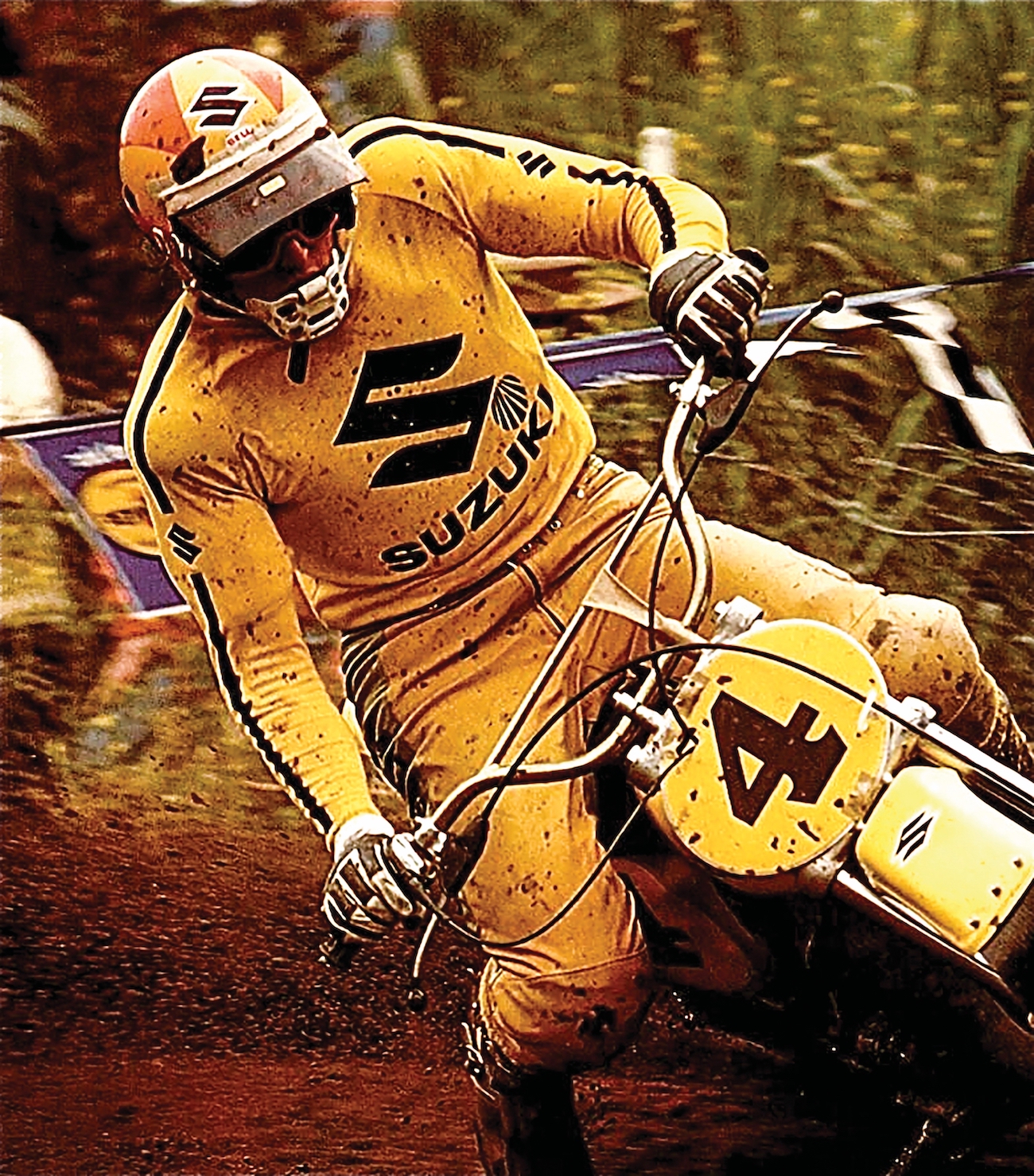
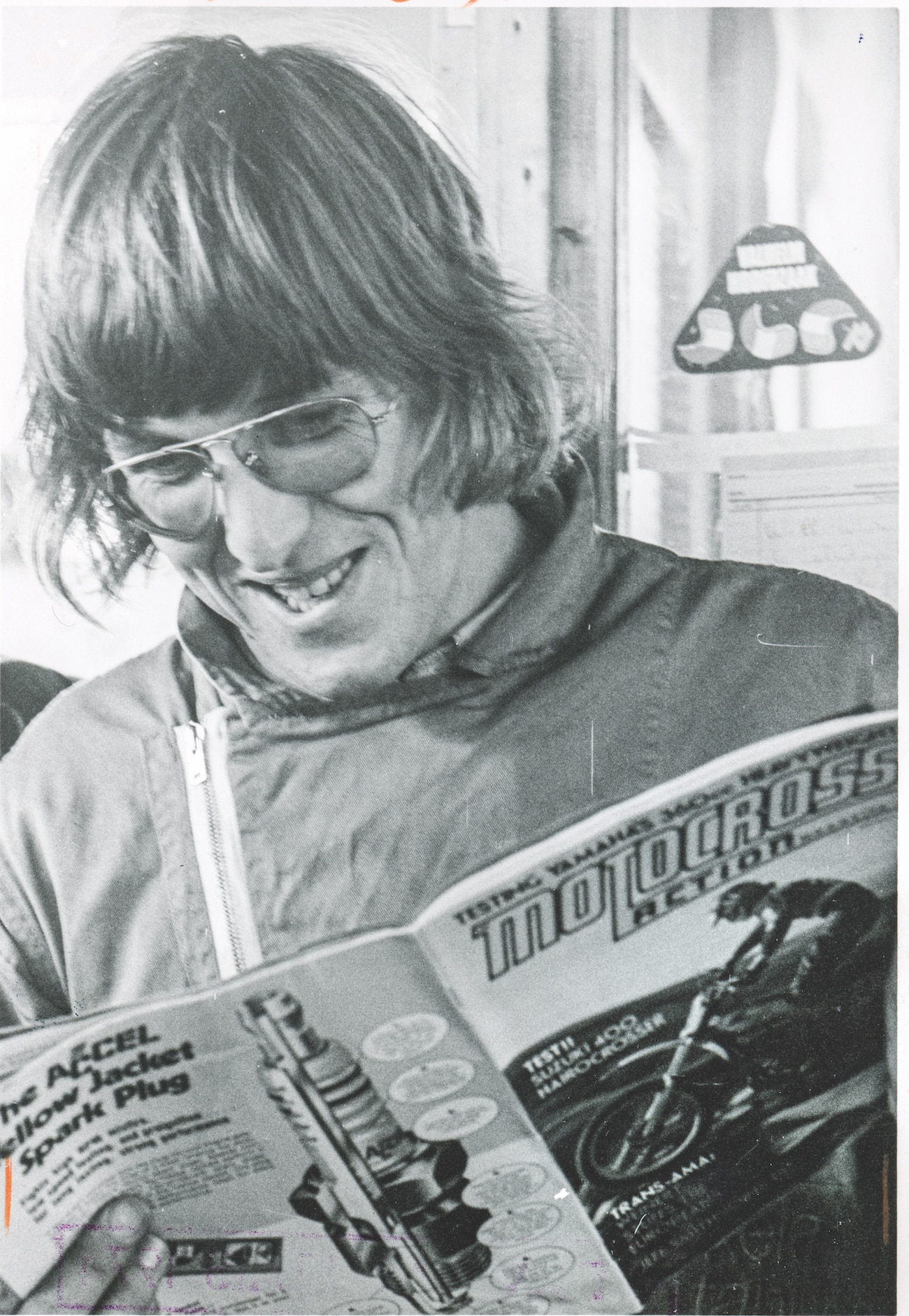
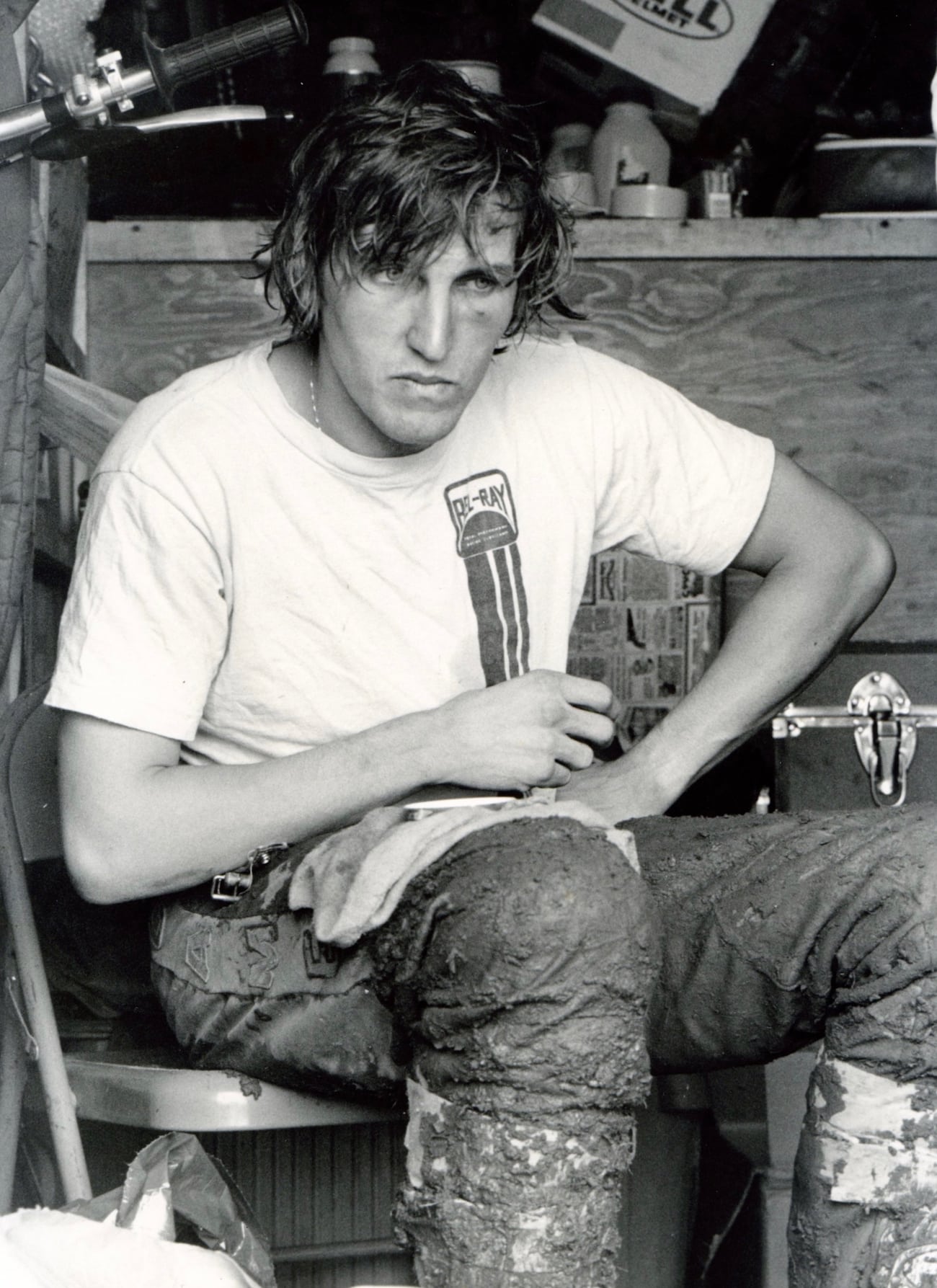
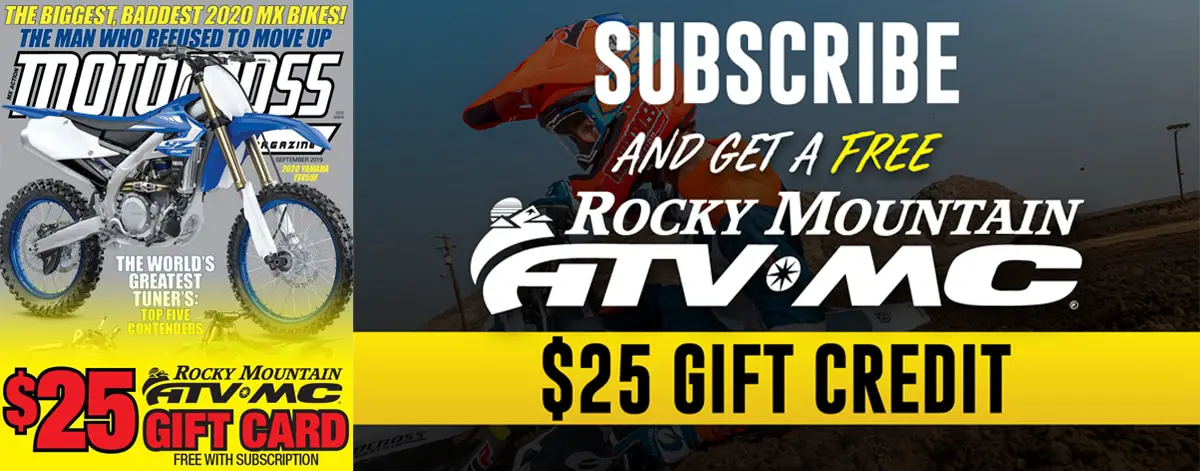



Comments are closed.